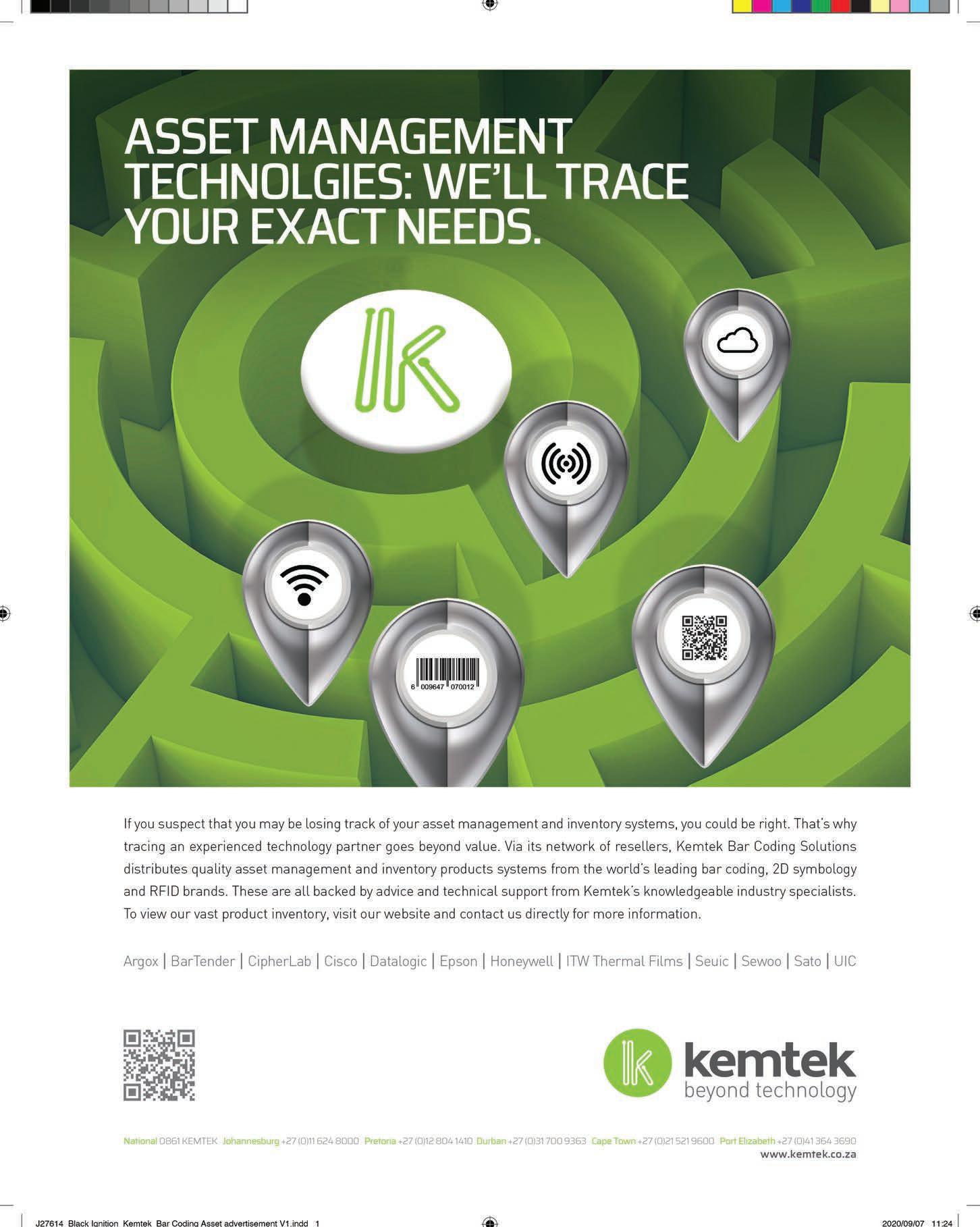
6 minute read
5
THE POST-COVID-19 WORKPLACE
With working from home likely to become the norm in a post-COVID-19 world, what does that mean for occupational health and safety? By MONIQUE VERDUYN
When the coronavirus hit our shores, a large proportion of the workforce was sent home to work remotely. And, it’s a trend that’s likely to continue.
“Working from home (WFH) requires you to find the right spot in your house, regulate your working hours, have access to resources, cope with household dynamics, and manage personal interactions with colleagues and staff,” says Ilse-Marie Iding, national OHS manager, Serr Synergy. “Many people are suffering from fatigue – one of the most common causes of work-related injuries and accidents reported over the past two months.”
The Occupational Health and Safety (OHS) Act places responsibility on the employer to ensure a safe and risk-free working environment for employees. It defines a workplace as any place where an employee can perform their duties as contractually required. So, WFH or travelling for work safely and free from harm is part of the employer’s responsibilities.
The implications are different according to each business, but Iding says three common recommendations are emerging: • implementing a WFH policy defining the roles and responsibilities of the employer, manager and employee • training the employee on the risks of working from home in an unsafe manner and discussing potential solutions • providing the option to work from the office should the employee not be able to work safely from home. Iding says additional considerations include reporting of an injury on duty while WFH, exposure to ergonomic risks, geographical location of employees, infrastructure available in specific locations, size and capacity of the house, apartment or other accommodation, and the number of people sharing premises.
“OHS practitioners have to be creative because the challenge is to find a balance between the employer’s duties and the employee’s responsibilities and what is reasonable and practicable,” says Iding.
WHO IS LEADING THE WFH REVOLUTION?
“If employees’ tools are a computer, mobile phone and data, they can WFH ‘forever’, provided their companies have a strong virtual technology infrastructure,” says Ilse-Marie Iding, national OHS manager, Serr Synergy. “These include financial services, consultants and marketers, legal and ICT. Some manufacturing companies are asking their administrative staff to work from home, while their production staff return to the workplace.”
“Many people are suffering from fatigue – one of the most common causes of work-related injuries and accidents reported over the past two months.” – Ilse-Marie Iding, national OHS manager, Serr Synergy
AIRPORTS ARE OPEN, BUT WHAT ABOUT THE VIRUS?
With international travel nally on the cards again, South Africa’s airports have implemented several COVID-19-related public health requirements and regulations, which passengers and airline crew will need to follow. “Passengers have become accustomed to and comfortable with the health and safety rules and processes, most of which have already become normalised across the country,” says a spokesperson for the Airports Company South Africa (ACSA).
“These include compulsory mask wearing, physical distancing and hand sanitising at dozens of stations across the airport. Physical distancing is enforced by airport employees acting as COVID-19 monitors and through the display of signage and oor decals.”
SAFETY TECHNOLOGY AT AIRPORTS
The security check-in process minimises physical contact: passengers place their boarding passes in front of the scanner at security and again at boarding gates.
Cape Town International Airport is piloting thermal security camera systems for temperature screening. These use AI technology to provide contactless temperature screening at terminal entrances.
FAST FACT At OR Tambo International Airport, mass screening of 6 000 employees was undertaken in April and May. Since level 5 of the lockdown, a total of 110 employees out of 38 000 normally working around the airport have tested positive for COVID-19. More crucially, there has been a 100 per cent
recovery rate. Source: ACSA
Meeters and greeters are not allowed into terminal buildings, a measure that prevents the clustering of people in a manner that is typical of airports under more normal circumstances.
All employees wear personal protective equipment when assisting passengers. Employees are screened when coming on and going off shift and are well-drilled in the rules and practices that keep them and the travelling public safe.
Passengers are encouraged to use online check-in to minimise touching of personal identity documents and to scan their boarding passes. Compulsory health questionnaires for passengers, along with screening by port health of cials, are key aspects of the effort to prevent ill people from ying.
LOOKING BEYOND THE MINE GATE TO DEAL WITH COVID-19

WHY PUBLIC-PRIVATE PARTNERSHIPS ARE ESSENTIAL IN THE MINING INDUSTRY’S RESPONSE TO THE PANDEMIC.
During the early days of the nationwide lockdown, the mining industry recognised how important it is to safeguard our people’s lives, while also protecting their livelihoods. There is no separation between lives and livelihoods because the social, economic and mental health and safety of our people is our overarching value. It is this imperative that has driven the mining industry’s diffi cult choices and response to the pandemic.
As an industry, we have had to sit down and thoughtfully refl ect on how we might work in partnership with our employees, contractors and host communities to provide them with the support that they require during this time. In our case, as Anglo American, this is all part of what it means to re-imagine mining to improve people’s lives. It is to think of the entire chain of vulnerabilities that our people and host communities are exposed to because of this pandemic, and work with government and other partners to deal with the devastating impacts
There is no question that we have a role to play in preventing and responding to, and recovering from, the Covid-19 pandemic, as we are part of the essential infrastructure that helps to provide services such as water, energy and healthcare services to our employees, their families and our host communities. Much of this work happens across the country, in towns and regions that are crucial to the sustainability of South Africa’s mining industry.
Collaborating beyond the mine gate
As the reality of the pandemic began to sink in in the month of March, it was clear to us as a company that we needed to act with great care to ensure that we do as much as we can to help those left vulnerable by the effects of the pandemic. Our fi rst point of call was to look at the availability of the infrastructure that we, as the mining industry, develop in partnership with the government to serve our people and host communities. An honest assessment of our readiness to deal with the pandemic, from an infrastructure point of view, was necessary in helping us fi gure out how we would need to work together to capacitate numerous clinics, hospitals, community centres and facilities that are now playing an important role in the region’s fi ght against the virus.
Closer to home at our operations themselves, we were clear that things had to change.
If you were to take a walk around any of our operations today, you will hopefully be reassured to see the extent of measures that we have taken within and beyond the mine gate over the past two months, to mitigate the spread of the virus, bearing in mind that this is something that is new and is still changing for all of us.
All of these initiatives, and many others that have been undertaken by companies in the Anglo American group and the mining industry more broadly, demonstrate that we truly are stronger, together.






